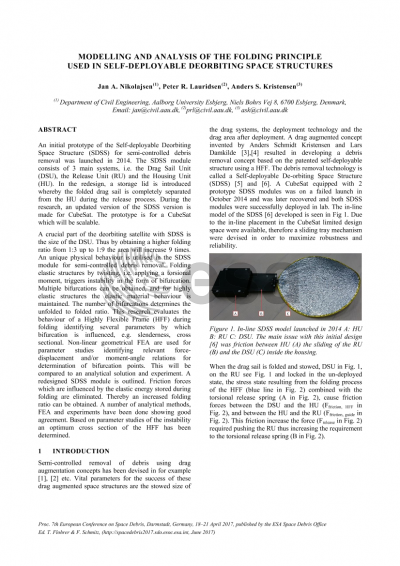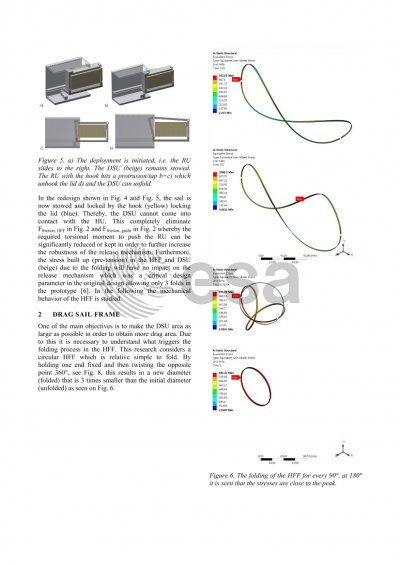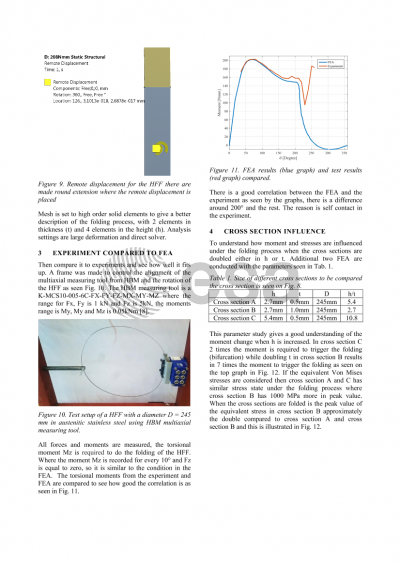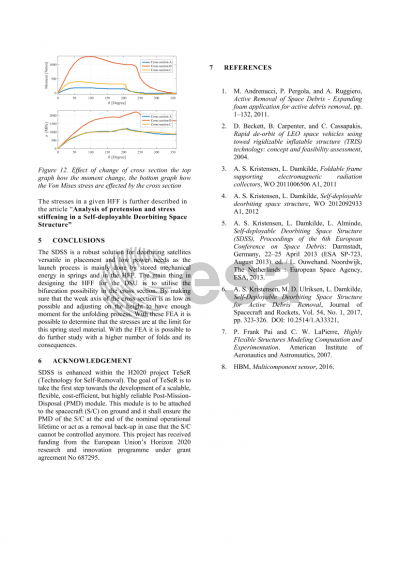Document details

Abstract
An initial prototype of the Self-deployable Deorbiting Space Structures (SDSS) for semi-controlled debris removal was launched in 2014. The SDSS module consists of 3 main systems, i.e. the drag sail unit (DSU), the release unit (RU) and the housing unit (HU). In the redesign a storage lid is introduced whereby the folded drag sail is completely separated from the housing unit during the release process. During the research an updated version of the SDSS version are made for CubeSat. The prototype is for a CubeSat which will be scalable.
A crucial part of deorbiting satellite with SDSS is the size of the DSU by gaining a higher folding ratio from 1:3 up to 1:9 the area will increase 9 times. The unique physical behavior is utilized in the SDSS module for semi-controlled debris removal. Folding elastic structures by twisting, i.e. applying a torsional moment, triggers instability in the form of bifurcation. Multiple bifurcations can be obtained and for highly elastic structures the elastic material behavior is maintained. The number of bifurcations determines the unfolded to folded ratio. This research evaluates the behavior of a highly elastic frame (HFE) during folding identifying several parameters by which the bifurcation is influenced, e.g. slenderness, cross sectional. Non-linear FEA are used for parameter studies identifying relevant force-displacement and/or moment-angle relations for determination of bifurcation points. This will be compared to analytical solution and experiment. These studies will give insights in the bifurcation and the archived force to unfold the DSU in comparison to the cross section.
This research is presented as a part of the research project TeSeR. AAU is responsible for Work package 4 where Airbus Defence and Space is the coordinator (and potential launch customer) of TeSeR. The project is conducted together with 10 notable institutes and companies from all across Europe with experts who have been working in the space debris issue for many years.
The TeSeR project contributes to solutions that will help solve the space debris issue to ensure a sustainable space environment for future generations. It is funded by the European Commission in the H2020 framework with almost EUR 3 million (grant agreement number 687295). It started in February 2016 and runs until January 2019.
Preview







